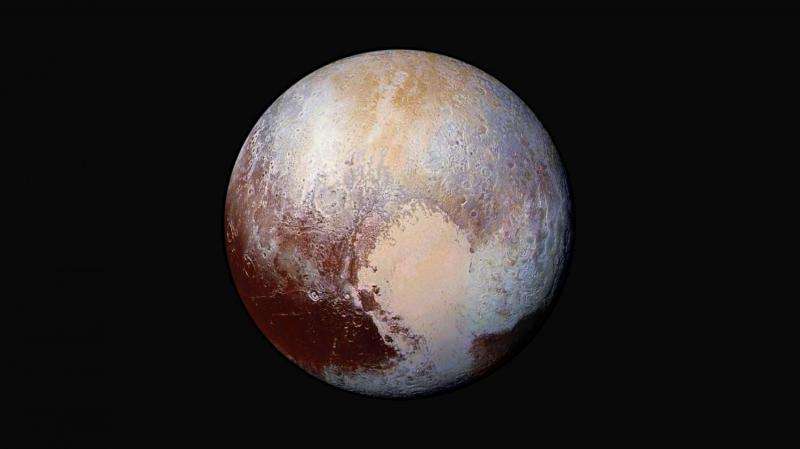August 24, 2015 report
New Horizons mission exceeds expectations

(Phys.org)—NASA's New Horizons mission, as the name suggests, is all about broadening our scientific horizons. The spacecraft, visiting the unexplored world of dwarf planet Pluto and its moons, continues to deliver more and more valuable scientific data. The new findings could help astronomers to unlock the solar system's mysteries hidden at its edge, where the sun glitters as a small bright spot on the sky.
Michael E. Summers, a professor of Planetary Sciences and Astronomy at the George Mason University in Fairfax, Virginia, and New Horizons co-investigator, is convinced that without any doubt, the mission has already exceeded all expectations.
"The information we have received so far from the New Horizons spacecraft has already given us a completely new view of Pluto's history, how it evolves, and how the surface and atmosphere interact," Summers told Phys.org. "The images of both Pluto and Charon were astonishing, and gave us some extraordinary surprises. Most importantly, the information has opened up completely new questions about how small bodies in the outer solar system evolve."
Icy dwarf planets such as Pluto are ancient relics that formed over four billion years ago, as scientists estimate. Because they are the bodies out of which the larger outer planets accumulated, they could teach us a lot about planetary formation.
One of the most puzzling discoveries is the finding of nitrogen gas on this icy world. New Horizons, during the Pluto fly-by, sent striking images of the dwarf planet's surface and its atmosphere dominated by nitrogen gas. Pluto's small mass allows hundreds of tons of atmospheric nitrogen to escape into space each hour. But the question that baffles scientists is where does all this nitrogen come from?

"That's a great question, and one that is currently being discussed in detail by the science team," Summers said. "The nitrogen atmosphere does extend to very large distances from Pluto, over a thousand kilometers above the surface, which supports the notion that Pluto's atmosphere is escaping hydro-dynamically from the planet."
According to New Horizons principal investigator Alan Stern, it's most likely that Pluto is actively resupplying nitrogen from its interior to its surface, possibly indicating the presence of ongoing geysers or cryovolcanism.
Besides the nitrogen discovery, the mission team received plenty of valuable scientific data and it's hard for them to choose the most important finding.
"It's impossible to pick just one discovery. But near the top would be what appears to be a huge ice glacier, presumably made of nitrogen, methane, and possibly other ices, at Pluto's equator," Summers said.
He also indicated that the apparently "fresh" nature of the surfaces of both Pluto and Charon that may be implying "young" geological age is also on his list of New Horizons' top important findings. Another would be the global haze layer seen after the spacecraft's closest approach and when it was looking back at Pluto.
"The backlit atmospheric haze gave Pluto a 'halo' appearance," Summers added.
The New Horizons team has so far received only a small percentage of the observational data taken by the spacecraft during its encounter with Pluto. The rest will be downlinked over the coming weeks and months.
"You can expect more images at high resolution, in addition to high spectral resolution observations of the surface and atmosphere," Summers noted.
New Horizons, after concluding its Pluto fly-by on July 14, will now focus on studying Kuiper belt objects (KBOs). The potential targets are yet to be chosen.
© 2015 Phys.org





















